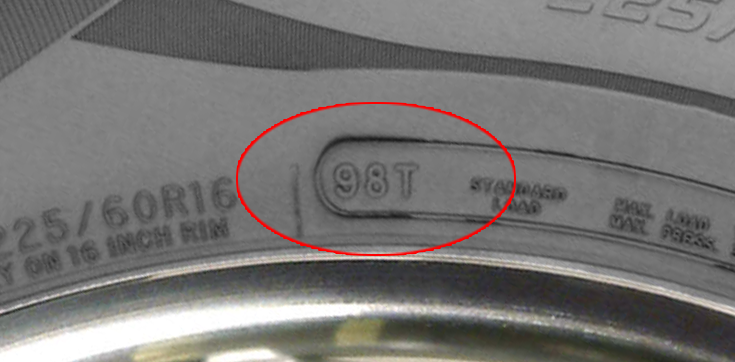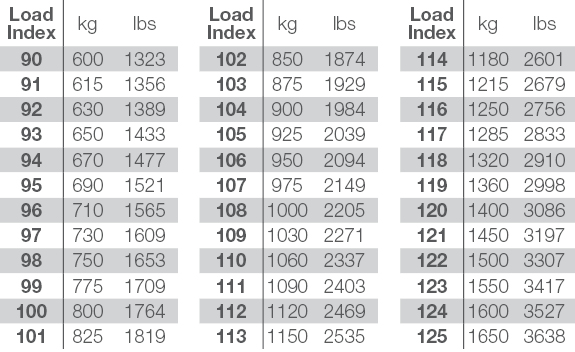Check your tyre load index and speed rating by looking at the markings on the sidewall. Using a 225/60R16 98T tyre size as an example, the 98T at the end is the tyre’s service description. The digits (98) represent the tyre’s load index, and the single letter (T) identifies the tyre’s speed rating.

Tyre Load Index
The tyre load index is used to compare the tyre’s relative load-carrying capabilities: the higher the load index number, the greater the tyre’s load-carrying capacity. Using the same example as before, a load index of 98 indicates that the tyre can carry a maximum of 750kg.
It is important to note that the load index rating represents the load-carrying capacity of tyres inflated to maximum PSI; this means the load carrying capacity reduces as tyre pressures are reduced.

Tyre Speed Rating
Speed ratings are based on laboratory tests where the tyre is pressed against a large-diameter metal drum to reflect its appropriate load and run at ever-increasing speeds until the tyre’s required speed has been consistently exceeded.
Australian Vehicle Standards rules state that a 4WD manufactured with off-road features must have a tyre speed rating of N (140km/h) or greater. The speed rating of the tyres fitted to a passenger vehicle is at least 180 km/h (S) when the tyre placard requires a higher speed rating than S.
It is not a legal requirement to match the tyre placard’s speed rating as long as it is not less than 140km/h for a 4WD or 180 km/h for passenger vehicles.
The speed rating must be stamped on the tyre.

Speed ratings only apply to tyres that have not been damaged, altered, under-inflated or overloaded. A tyre that has been cut or punctured no longer retains the original speed rating even after being repaired.

